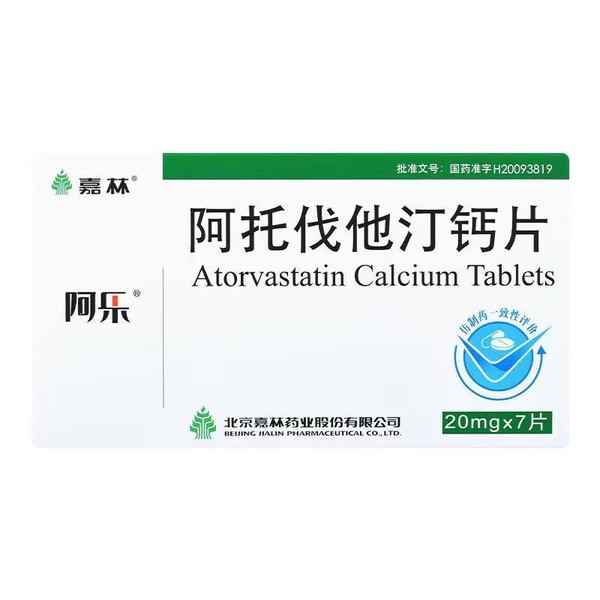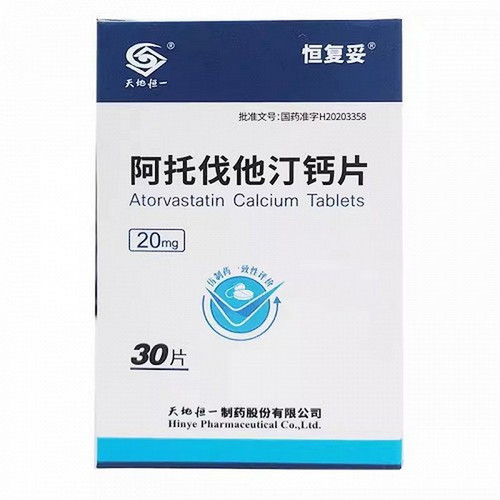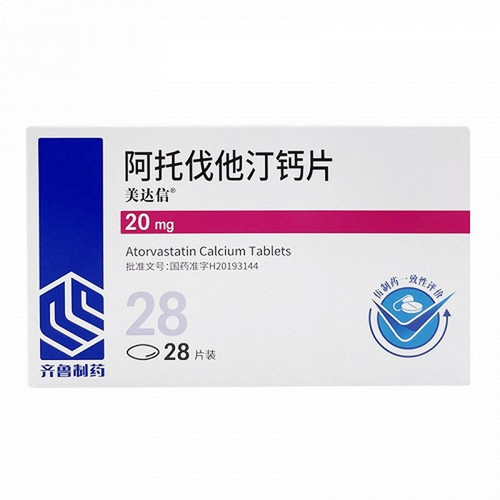Product Overview
[Drug Name]
Generic Name: Atorvastatin Calcium Tablets
Trade Name: Ale, Atorvastatin Calcium Tablets, 20mg x 7 tablets
[Main Ingredients]
The main ingredient of this product is atorvastatin calcium.
[Properties]
This product is a white film-coated tablet, which appears white after removal of the film coating.
[Indications/Main Functions]
For the treatment of hypercholesterolemia and combined hyperlipidemia; prevention and treatment of coronary heart disease and stroke.
[Specifications]
20mg x 7 tablets (Ale)
[Dosage and Administration]
Usual adult oral dose: 10-20mg, once daily, taken with dinner. The dose can be adjusted as needed, but the maximum daily dose should not exceed 80mg.
[Adverse Reactions]
1. The most common adverse reaction to this product is gastrointestinal discomfort. Others include headache, rash, dizziness, blurred vision, and taste disturbances. 2. It may occasionally cause a reversible increase in serum aminotransferase levels. Therefore, liver function should be monitored. 3. Rare adverse reactions include impotence and insomnia. 4. Rare adverse reactions include myositis, myalgia, and rhabdomyolysis, manifested as muscle pain, fatigue, fever, and accompanied by elevated blood creatine phosphokinase and myoglobinuria. Rhabdomyolysis can lead to renal failure, but this is rare. Concomitant use of this product with immunosuppressants, folic acid biologics, niacin, gemfibrozil, and erythromycin may increase the risk of myopathy. 5. Hepatitis, pancreatitis, and allergic reactions such as angioedema have been reported.
[Drug Interactions]
1. Concomitant use of this product with oral anticoagulants may prolong the prothrombin time and increase the risk of bleeding. 2. Concomitant use of this product with immunosuppressants such as cyclosporine, erythromycin, gemfibrozil, and niacin may increase the risk of myolysis and acute renal failure. 3. Colestipol and cholestyramine may reduce the bioavailability of this product; therefore, this product should be taken 4 hours after the former.
[Precautions]
1. Contraindicated in patients allergic to atorvastatin. Use with caution in patients allergic to other HMG-CoA reductase inhibitors. 2. Contraindicated in patients with active liver disease or persistently elevated serum aminotransferase levels due to unexplained causes.
[Pediatric Use]
Use in children is limited, and long-term safety has not been established.
[Elderly Use]
Dose adjustment is required for elderly patients based on liver and kidney function.
[Overdose]
There is no specific treatment for overdose with this drug. In the event of an overdose, patients should receive symptomatic and supportive care as needed. Liver function and serum creatine phosphokinase levels should be monitored. Because a large amount of the drug is bound to plasma proteins, hemodialysis does not significantly accelerate the clearance of atorvastatin.
[Pharmacology and Toxicology]
This drug is a statin, a lipid-regulating drug and an HMG-CoA reductase inhibitor. It is inactive itself. However, its hydrolysis product after oral absorption competitively inhibits hydroxymethylglutaryl-CoA reductase, the rate-limiting enzyme in cholesterol synthesis, in the body, reducing cholesterol synthesis and increasing low-density lipoprotein receptor synthesis. Its primary site of action is the liver, resulting in lower blood cholesterol and low-density lipoprotein cholesterol levels, moderately lowering serum triglyceride levels, and increasing blood high-density lipoprotein levels. This has a preventive and therapeutic effect on atherosclerosis and coronary heart disease.







